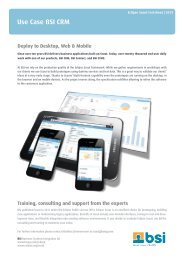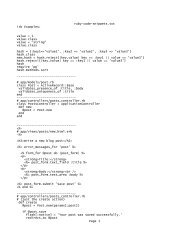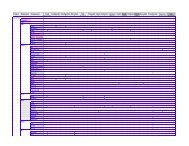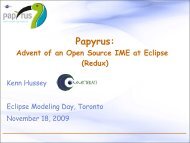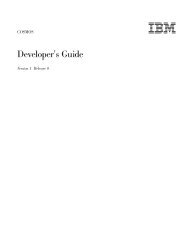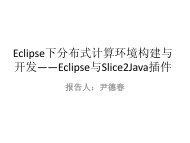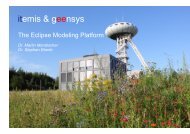Download
Download
Download
Create successful ePaper yourself
Turn your PDF publications into a flip-book with our unique Google optimized e-Paper software.
CDT uses a hierarchical model called the CModel to represent resources within<br />
CDT projects. This model can be viewed by users via the C/C++ Projects View.<br />
The process of indexing source code in CDT happens in multiple phases. When<br />
a user makes changes to their source code, the changes are analyzed with<br />
respect to the core project model (CModel). Each element in the model is an<br />
ICElement. The corresponding ICElements for projects, folders and source files<br />
are ICProjects, ICContainers, and ITranslationUnits, respectively. The<br />
ICElements that are affected by the user’s changes are collected and stored in a<br />
delta.<br />
RemoteIndexDesign.doc<br />
Copyright ©2006 IBM Corporation<br />
Distributed under the Eclipse Public License v1.0<br />
Page 8 of 26<br />
CModel elements<br />
The indexer analyzes the delta to determine which files need to be indexed. The<br />
contents of these files are then passed to the parser. The parser extracts<br />
structural information from the source code and produces Abstract Syntax Trees<br />
(AST). Finally, the indexer extracts semantic information from the ASTs, such as<br />
class and variable references, declarations, and definitions, and stores that in the<br />
PDOM index.<br />
2.2.2 Project Natures<br />
CDT provides project natures for C and C++. When the CModel is built all the<br />
projects in the workspace are scanned. Any project with the C or C++ nature is<br />
then added to the CModel (as a CProject element).



